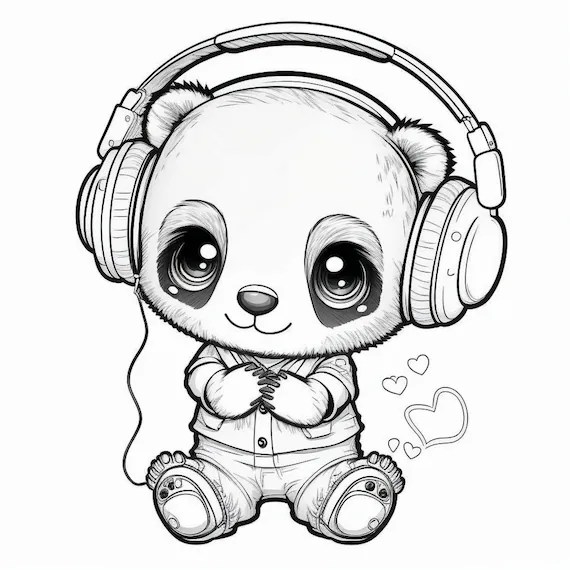Additional Design Elements: Easy Coloring Pages Of Cute Animals

Easy coloring pages of cute animals – Elevating the simplicity of cute animal coloring pages involves thoughtfully incorporating additional design elements that enhance visual appeal without sacrificing ease of coloring. Subtle additions can significantly impact the overall aesthetic, transforming a basic Artikel into an engaging and delightful activity for children. This section explores effective ways to achieve this enhancement.Adding simple background elements, subtle patterns, and carefully chosen borders can transform a basic coloring page.
These elements should complement the main subject, the adorable animal, rather than compete for attention. The goal is to create a cohesive and visually pleasing design that stimulates creativity and enjoyment.
Simple Background Elements, Easy coloring pages of cute animals
Simple background elements can add depth and context to the coloring page without distracting from the main animal subject. Consider incorporating subtle textures like faint grass patterns for a farm animal, or starry night skies for a nocturnal creature. A simple, repeating pattern, such as polka dots or small flowers, can add visual interest without overwhelming the page. For instance, a playful giraffe coloring page could feature a light, repeating pattern of African savanna grass, or a polar bear could be set against a background of delicately rendered snowflakes.
These subtle additions add context and a sense of place without adding unnecessary complexity to the coloring process.
Adding Simple Patterns or Textures
Adding simple patterns or textures to the animals’ fur or feathers adds a layer of visual richness and realism. This can be achieved using simple repeated shapes or lines. For example, a cat’s fur could be textured with small, repeated curved lines to mimic its softness, while a bird’s feathers could be subtly patterned with tiny, overlapping shapes.
A playful approach could involve using different patterns for different parts of the animal; for example, a tiger’s stripes could be slightly varied in thickness and spacing to create a more dynamic effect. The key is to keep the patterns simple and easy to color, ensuring that the focus remains on the enjoyment of the coloring process itself.
Avoid overly intricate designs that might frustrate younger children.
Border Design
A well-designed border can frame the coloring page and enhance its overall aesthetic appeal. The border should complement the animal and the color scheme, enhancing the overall design. Simple geometric shapes, like circles, squares, or triangles, can create a visually appealing border. Alternatively, a more organic border, perhaps featuring stylized leaves or flowers, could be used to complement a nature-themed animal.
The border should be simple enough to color easily and not detract from the main image. For example, a simple scalloped border would work well with a cute bunny, while a more geometric border might suit a panda coloring page. The color of the border should either match or complement the main colors of the animal and the background, creating a cohesive and visually pleasing design.
The innocent charm of easy coloring pages of cute animals, with their wide eyes and fluffy tails, can be surprisingly deceptive. A hidden world exists, a world of blushing cheeks and stolen glances, hinted at in the more mature themes found in coloring pages romance anime. Yet, even within the seemingly simple lines of a kitten or puppy, a quiet mystery lurks; a secret whispered only to those who look closely enough.
Returning to the gentle simplicity of those cute animals, one can’t help but wonder what untold stories they hold.
